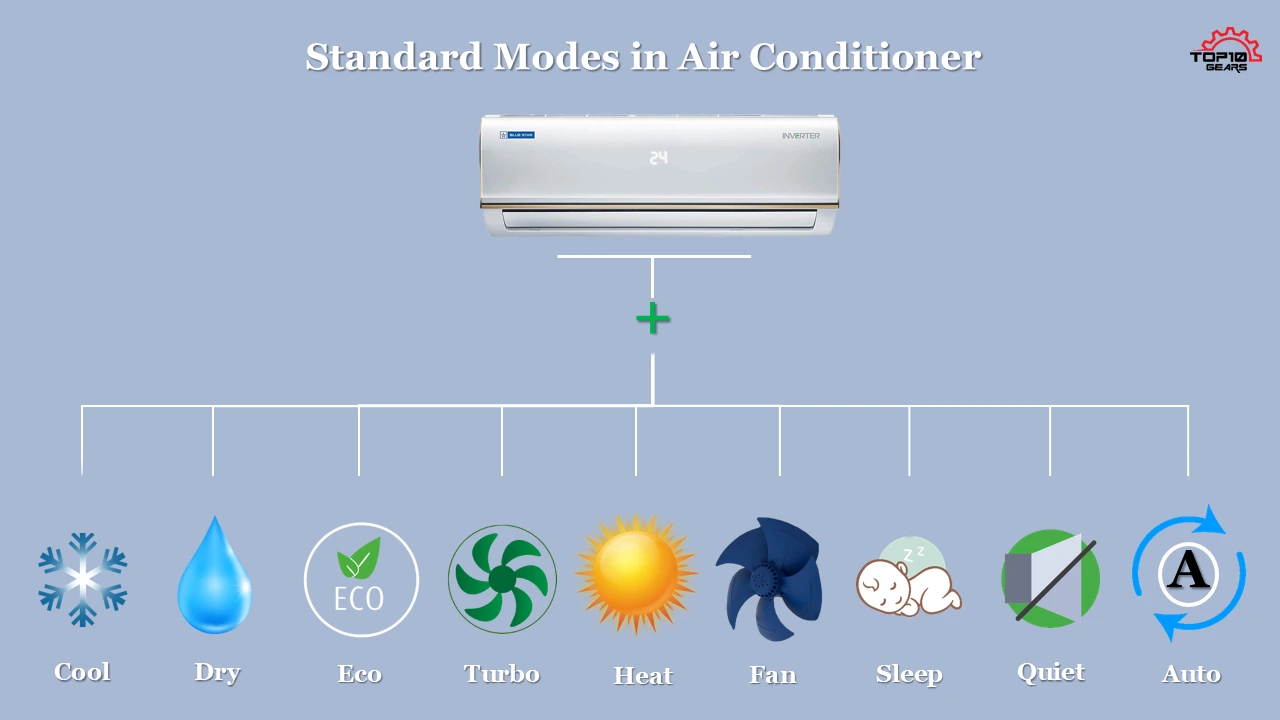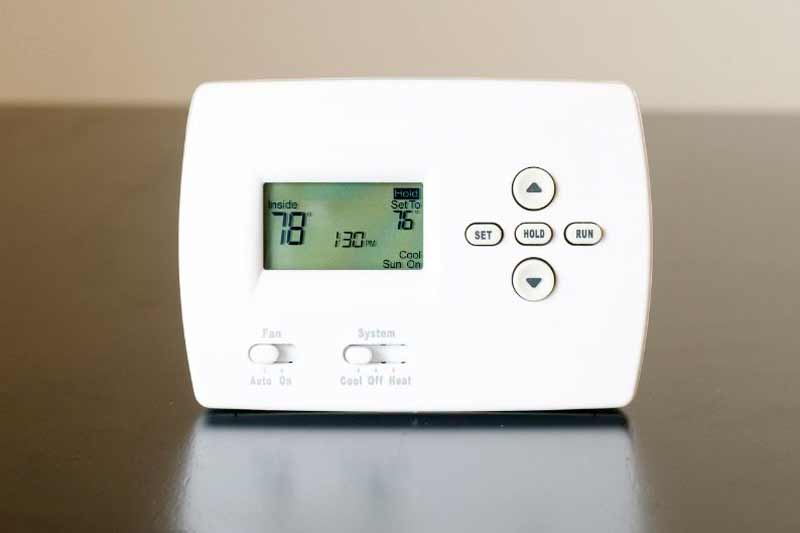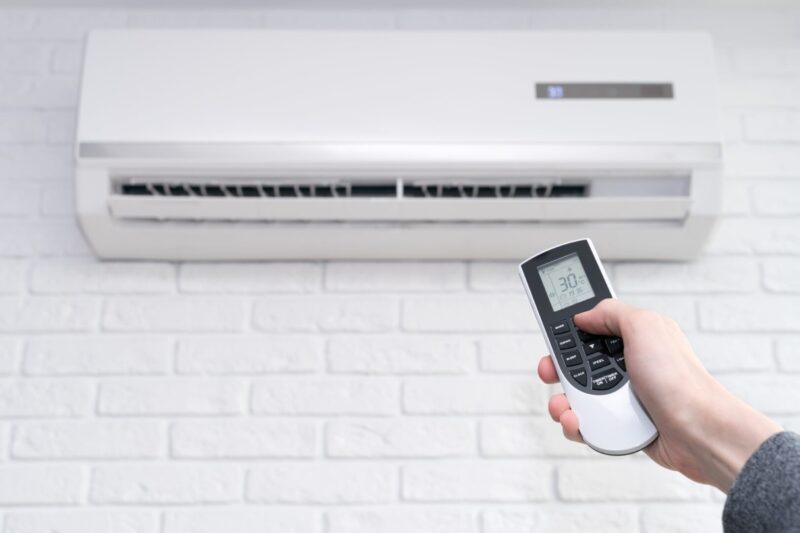What Is Best Setting For Air Conditioner

Finding the perfect temperature setting for your air conditioner isn't just about comfort; it's about efficiency, cost savings, and the longevity of your HVAC system. This guide dives into the optimal settings for your AC, considering factors like energy efficiency, home occupancy, and even the specific model of your unit. We'll also explore how different AFUE, SEER, and HSPF ratings impact your cooling costs.
Understanding the Basics: Temperature and Energy Efficiency
The U.S. Department of Energy (DOE) recommends setting your thermostat to 78°F (26°C) when you're home and need cooling. This setting balances comfort and energy conservation. However, this is just a starting point, and the "best" setting can vary.
Factors Influencing the Ideal AC Setting
- Occupancy: When you're away from home, raising the thermostat can significantly reduce energy consumption.
- Climate: In hotter climates, you might need to set the thermostat lower to achieve the same level of comfort.
- Home Insulation: Well-insulated homes retain cool air more effectively, allowing for higher thermostat settings.
- Personal Preference: Some individuals are more sensitive to heat or cold than others.
- Age and Health: Elderly individuals or those with certain health conditions may require different temperature settings.
Programmable Thermostats: Your Key to Efficient Cooling
Investing in a programmable or smart thermostat allows you to automate temperature adjustments based on your schedule. This ensures that your AC isn't running unnecessarily when you're not home.
Types of Programmable Thermostats:
- 7-Day Programmable Thermostats: Offer the most flexibility, allowing you to set different schedules for each day of the week.
- 5-2 Day Programmable Thermostats: Allow one schedule for weekdays and another for weekends.
- Smart Thermostats: Learn your habits and automatically adjust temperature settings based on your preferences. Many can be controlled remotely via smartphone apps.
Popular smart thermostat brands include Nest, Ecobee, and Honeywell. These thermostats often integrate with other smart home devices and provide detailed energy usage reports, helping you further optimize your cooling strategy.
AC Settings When You're Away from Home
When you're away for several hours or days, increasing your thermostat setting is crucial for saving energy. The DOE recommends setting your thermostat to 85°F (29°C) when you're away for extended periods. This prevents your home from becoming excessively hot and humid, minimizing the energy required to cool it down upon your return. For longer vacations, consider setting it even higher, or turning the AC off completely if your home is well-insulated and you live in a relatively dry climate.
Understanding SEER, AFUE, and HSPF Ratings
When choosing a new AC system, understanding its efficiency ratings is essential. These ratings indicate how efficiently the system converts energy into cooling or heating power.
SEER (Seasonal Energy Efficiency Ratio):
SEER measures the cooling efficiency of an air conditioner. The higher the SEER rating, the more efficient the unit. Modern AC units typically have SEER ratings ranging from 13 to 25 or higher. A unit with a higher SEER rating will generally cost more upfront, but it will save you money on energy bills over the long term. The minimum SEER rating currently mandated by the U.S. government is 14 or 15, depending on the region.
AFUE (Annual Fuel Utilization Efficiency):
While primarily used for furnaces, understanding AFUE is important if you have a dual-fuel system (a heat pump with a gas furnace backup). AFUE measures the heating efficiency of a furnace. A higher AFUE rating means that the furnace wastes less fuel and operates more efficiently. Common AFUE ratings range from 80% to 98%.
HSPF (Heating Seasonal Performance Factor):
HSPF measures the heating efficiency of a heat pump. The higher the HSPF rating, the more efficient the heat pump is at heating your home. Current heat pumps typically have HSPF ratings ranging from 8 to 13 or higher.
Investing in a unit with higher SEER and HSPF ratings can significantly reduce your energy consumption and lower your utility bills over the lifespan of the system. Although the initial cost may be higher, the long-term savings can easily offset the difference.
Popular HVAC Brands and Models
Several reputable HVAC brands offer a wide range of models to suit different needs and budgets. Here are some popular brands and examples of their AC units:
- Carrier: Known for their high-efficiency and advanced technology. Models like the Carrier Infinity 26 offer SEER ratings up to 26.
- Trane: Offers reliable and durable AC systems. The Trane XV20i is a popular choice with variable-speed technology and a SEER rating of up to 20.
- Lennox: Known for their quiet operation and energy efficiency. The Lennox SL28XCV boasts a SEER rating of up to 28.
- Goodman: Provides more affordable options without compromising on quality. Goodman units provide a great price point for rental properties and smaller homes.
- Rheem: Offers a balance of performance and value. Their heat pump systems are highly sought after.
When selecting a brand and model, consider factors such as the size of your home, your budget, and your desired level of energy efficiency. Consult with an HVAC professional to determine the best system for your specific needs.
Maintenance and Warranty Considerations
Proper maintenance is crucial for the longevity and efficiency of your AC system. Regular maintenance can prevent costly repairs and ensure that your unit operates at its peak performance.
Recommended Maintenance Tasks:
- Clean or Replace Air Filters: Dirty air filters restrict airflow and reduce efficiency. Replace or clean your air filters every 1-3 months.
- Clean the Outdoor Unit: Remove debris and vegetation from around the outdoor unit to ensure proper airflow.
- Schedule Professional Maintenance: Have your AC system professionally inspected and tuned up at least once a year.
- Inspect Ductwork: Check for leaks or damage in your ductwork and seal any gaps to prevent air loss.
Warranty coverage is another important consideration. Most HVAC manufacturers offer warranties on their products, typically covering parts for a certain period (e.g., 5-10 years). Some manufacturers also offer extended warranties that cover labor costs. Be sure to understand the terms and conditions of your warranty and register your system to ensure proper coverage.
The Impact of Home Insulation
Proper insulation plays a vital role in maintaining a comfortable temperature inside your home and reducing your energy consumption. Well-insulated walls, ceilings, and windows help prevent heat from entering your home during the summer and escaping during the winter. This allows your AC system to operate more efficiently and maintain a more consistent temperature.
Insulation Types:
- Fiberglass Insulation: A common and affordable option.
- Cellulose Insulation: Made from recycled paper and provides good insulation value.
- Spray Foam Insulation: Offers excellent insulation and air sealing properties.
- Rigid Foam Insulation: Often used for exterior walls and foundations.
Consider upgrading your home's insulation to improve energy efficiency and reduce your cooling costs.
Additional Tips for Efficient Cooling
- Use Ceiling Fans: Ceiling fans can help circulate air and make you feel cooler, allowing you to raise your thermostat setting.
- Close Curtains and Blinds: Blocking sunlight can prevent your home from overheating.
- Cook During Cooler Times of the Day: Avoid using your oven or stove during the hottest part of the day to reduce heat buildup inside your home.
- Seal Windows and Doors: Prevent air leaks by sealing gaps around windows and doors.
- Consider a Whole-House Fan: If you live in a climate with cool evenings, a whole-house fan can help exhaust hot air and cool your home naturally.
Conclusion: Finding Your Ideal AC Setting
Determining the "best" setting for your air conditioner is a multifaceted decision that depends on numerous factors. While 78°F (26°C) is a good starting point, consider your occupancy, climate, home insulation, and personal preferences. Invest in a programmable thermostat to automate temperature adjustments and maximize energy savings. Furthermore, understand the SEER, AFUE, and HSPF ratings of your AC system to make informed purchasing decisions. By following these guidelines, you can optimize your cooling strategy, save money on energy bills, and enjoy a comfortable home environment.










